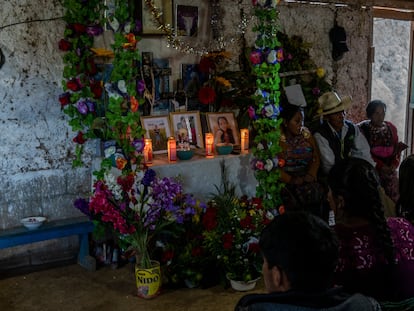Mexico’s ‘death flights’: 50 years of impunity
During the Dirty War, the Mexican police and army executed farmers, teachers, activists and students, and dropped their bodies out of planes. Half a century on, these crimes continue to go unpunished
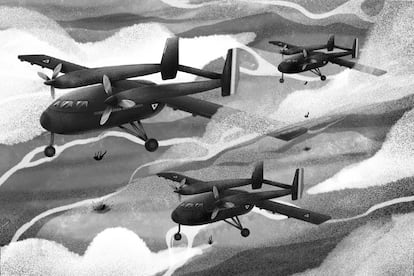

In the early 1970s, Apolinar Ceballos was a trainee pilot who had just arrived on the military airbase of Pie de la Cuesta, on the coast of Guerrero state in Mexico. A teacher informed him one afternoon that he had been selected for a special mission – and he could tell no one about it. Ceballos would see some strange things, he was told, but he was to follow orders and not breathe a word.
His first mission began at dawn. He was in charge of the plane and his teacher was his co-pilot. Before taking off, he could hear footsteps and voices as he sat in the cockpit. “This package is heavy,” someone said. “This one is light.” After half an hour in the air, he was ordered to slow down, cruise as low as possible over the sea and wait for instructions. Ceballos heard them drag the packages over the edge and open one of the plane doors. “Ready!” someone shouted. The mission had been accomplished.
The bundles that Ceballos heard being dragged over the floor of the plane were corpses – the bodies of peasant farmers, teachers, activists, students and doctors executed by the Mexican police and army and sent to a watery grave in the Pacific. They were the victims of one of the darkest episodes of the Mexican Dirty War, which we are only beginning to understand five decades on.
In March 1971, “Plan Spiderweb” was launched by the Mexican military. “The main mission is to locate groups of thugs, then capture or neutralize them,” reads a now declassified secret report seen by EL PAÍS, which was signed by Hermenegildo Cuenca Díaz, then defense minister and commander-in-chief of the army. The letter was addressed to the military forces of Guerrero.
The shadow of repression already hung over the military following the Tlatelolco massacre of hundreds of unarmed civilians in Mexico City in 1968, but Plan Spiderweb marked the point when the persecution of dissidents became systematic. The Institutional Revolutionary Party (PRI) ruled Mexico for seven decades from 1929 onwards, and would perpetuate its tactics until at least the end of the 1980s.

Mexican guerrillas in the 1970s were drawn from the poorest and most desperate sectors of society, unlike the more middle-class elements who led the revolution in Cuba. While the PRI regime welcomed political refugees from those fighting dictatorships in Argentina or Chile, any attempt to speak out about Mexican society and agitate for change was met with swift retribution.
The trauma of this era has barely been touched in Mexico. Transitional justice, which aims to respond to widespread human rights violations through the mechanisms of truth commissions, preserving evidence and witness testimony, and state reparations, has not met international standards. The open wound of this era has also bled into the new violence caused by drug trafficking cartels. As a result, figures for the number of dead targeted for political reasons are hard to come by. The Truth Commission of Guerrero, which has faced harassment and blocked access in attempts to investigate Dirty War-era crimes, put the number of disappeared at 788 in 2014. More recent records place that figure at 900 people. The evidence is even more patchy when it comes to counting the victims of death flights, with testimonies ranging from a hundred missing to more than a thousand.
At the center of this black hole of information is General Arturo Acosta Chaparro, a sinister figure who served as police chief in Guerrero, the epicenter of the Dirty War. In 2002, he was accused by a military tribunal of murdering and tossing at least 143 people into the ocean. He was never convicted. He retired with full honors and became embroiled in accusations of drug trafficking until 2012, when two hitmen drove by on a motorcycle and shot him three times in the head in broad daylight. He was 70 years old.

The testimonies of pilots such as Ceballos and other military personnel appeared in the summary of the 2002 trial. Chaparro not only planned the murders but preferred to kill his victims personally, always using the same method – a single shot in the back of the head with a .380-caliber revolver. Once executed, a nylon bag was placed over the head and tied around the neck of the victim to avoid leaving traces of blood. The corpses were then placed inside tarpaulin sacks filled with stones. The sack was then sewn shut and taken to the waiting plane. Chaparro always used the same pistol for the executions, which he baptized “la espada justiciera” or, “the righteous sword.”
Military mechanic Monroy Candía testified in the trial that he participated in 15 death flights, carrying a total of 120 corpses. Chaparro was on board and gave the orders. Monroy also stated that on some occasions the bodies inside the sacks were still moving and were thrown into the sea alive. Captain Roberto Hicochera was another who gave a statement: “He did not want to ask questions or interfere in anything, because there were rumors that the Arava plane was used to throw people into the sea.” He only said that he knew the flights took off at dawn, went offshore, and that at a certain point they would slow down and then return.
The blood and glamor of Acapulco
The beach town of Acapulco in Guerrero became the playground of Hollywood jet setters in the 1950s, and it wasn’t uncommon to spot stars such as Bette Davis, Rita Hayworth or Cary Grant on the beach. Two decades later, Frank Sinatra and John Wayne, who even bought his own hotel, were still traveling there for margaritas. On the terrace of Wayne’s Flamingos hotel, high up in the cliffs, you could even see the bay of Pie de la Cuesta and the military base area. Less than half an hour’s drive from the resort was the place where General Chaparro and his henchmen committed their atrocities.
The Pie de la Cuesta military base was one of centers for detention and torture, as well as the take-off point for the death flights. “It’s where we lost track of my mom. That’s why we think she could have disappeared on one of the flights,” Alicia de los Ríos, daughter of a guerrilla leader from the era, tells EL PAÍS. Named Alicia like her daughter, De los Ríos was arrested in January 1978 by the Brigada Blanca (or White Brigade), a counterinsurgency group made up of military personnel and members of the Federal Security Directorate (DFS), the PRI’s political police.
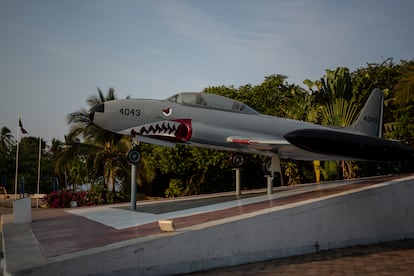
Her daughter has pursued the Mexican state in court for almost 20 years, and only knows her mother’s final whereabouts from statements made by another detainee, Alfredo Medina Vizcaíno. He was captured in Ciudad Juarez the same year. His statement, seen by EL PAÍS, explains how detainees from different parts of the country were taken to the Pie de la Cuesta military base.
Vizcaíno recounted the torture – a pattern that included immersion in water, electric shocks and beatings with iron bars – and added that detainees were put “in a bathroom where they stayed until the following day.” In May 1978, when he emerged he saw De los Ríos, and from then on nobody knows. The dates coincide with the period in which the death flights took place, according to one of the few official reports: 30 flights in total between 1975 and 1979. This was the same period in which dictatorships in the south of the continent, such as Argentina and Chile, systematically followed the same practice.
“My mother went through a process of radicalization that was very common at the time. She came from a farming family, started out in activism but ended up in an armed struggle influenced by the Cuban experience,” De los Ríos explains. In 1960, Guerrero was the poorest state in Mexico. More than three-quarters of the population worked in the fields and 60% were illiterate.
The Mexican guerrillas were fighting for reform in agriculture and access to education, ideals of the 50-year-old revolution that had been hijacked by the authoritarian PRI regime. Professor Genaro Vázquez, one of the guerrilla leaders, even ran in the 1962 elections, which were blocked by the single-party state. In 1968, Guerrero teachers took up arms against “the PRI oligarchy, which ran in and decided the result of elections,” according to statements in declassified DFS documents.
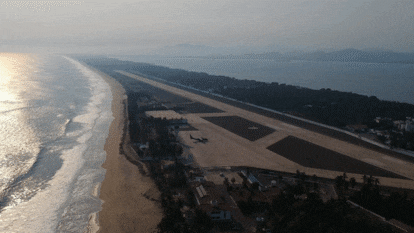
The kidnapping in 1974 of the PRI candidate for Guerrero governor, Ruben Figueroa, further intensified the repression. Lucio Cabañas and his Party of the Poor, another group of armed teachers, were responsible. After being held under siege in the mountains Cabañas died shortly afterward. With Figueroa installed as governor and Chaparro as his right-hand man, another police and military death squad was born: the Grupo Sangre (Blood Group). Among its objectives were “to avenge insults aimed at the governor, people who had problems with the army or drug traffickers,” according to the Truth Commission report. Their offensive included the use of helicopters which fired on communities: “Reconnaissance continues to be carried out preceded by mortar fire,” another military report said.
The Truth Commission report states that the authorities had “practically unlimited” powers to exterminate the guerrillas. “Among the detainees, there were even minors, and some of them remained there only because they were relatives of guerrilla leaders or alleged sympathizers,” it said. Extreme torture was also used, as revealed by numerous reports by the Human Rights Commission and confirmed by Medina Vizcaíno’s statement. Detainees “were tied to a board and submerged in the pocito [a basin full of sewage] ... or [they died] in the simplest way, with a bullet in the head” – General Chaparro’s righteous sword once again.
Unresolved encounters
“I thought he was going to shoot me in the back of the head too,” recalls Rogelio Ortega, a 65-year-old professor at the Autonomous University of Guerrero who crossed paths with the general as a young man. Over the phone from Acapulco, Ortega tells EL PAÍS how he was kidnapped in 1977 as he was leaving his mother’s house. He was hooded and bound, and taken to a clandestine prison. He spent 15 days in a tiny cell, unable to lie down, and with the lights on 24 hours a day while a radio blared. Chaparro directed the interrogations. “My cell was just after the torture room, so I could smell the blood,” says Ortega.
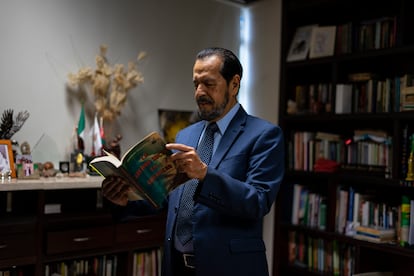
At 25 years old, he had been a guerrilla fighter, but had given up on armed struggle by then. Thanks to pressure from his mother, also a teacher from Guerrero, he was released. “They waited a few days for my bruises to recede, then took me out and put me in a pickup truck,” he says. As they drove along the coastal highway, Ortega thought they were taking him to Pie de la Cuesta. When they took him out of the car, still hooded and tied up, he believed his death was imminent. Before releasing him, Chaparro gave him a warning: “We are letting you go because there is a lot of fuss being made for you, but if you are a guerrilla, I will find out and I will come back for you.”
Chaparro carried out his threat. Less than a year later, he came for Ortega, who managed to escape through the roof of the safe house where he was sheltering. He fled the country to Nicaragua, and then Paris, until he was able to return to Guerrero in the 1990s. “It was kind of a pact where they told me they preferred to have me at the university to keep an eye on me rather than have me in hiding,” he says.
Ortega, who in 2014 was appointed interim governor of the state for a few months, defines the lack of closure that is typical of victims of the Dirty War. “There is no serious policy of clarifying what happened in that period. There are no sentences for those responsible and the state has not acknowledged publicly that the army participated in it all,” says lawyer Santiago Aguirre, director of the Prodh Center, which works with victims to file legal complaints.

In Argentina, Uruguay and Guatemala, Aguirre notes, truth commissions have managed to get to the bottom of the crimes of the past. Initiatives such as the Special Prosecutor’s Office for Social and Political Movements of the Past, instated after Mexico’s democratic opening of 2000, and the Truth Commission of Guerrero were failures, he believes. Both were torpedoed by higher powers such as the army and prosecutor’s office and forced to abandon their work unfinished.
Aguirre points out another Mexican particularity. “The new context of drug violence has ended up diluting the idea that the disappeared are a thing of the past. Mexico needs extraordinary measures to face up to a human rights crisis that has its roots in the Dirty War and which has not ceased since then. There is no comparison on the continent,” he says.
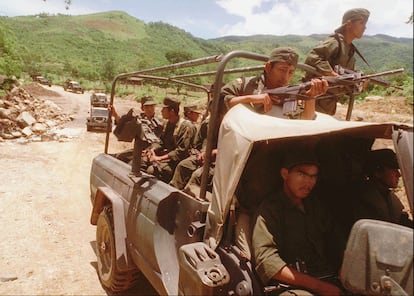
Ortega also embodies this continuity. Before escaping abroad, he took refuge for a few months at Ayotzinapa Rural Teachers’ College, the same school where 43 students disappeared in 2014 allegedly at the hands of an alliance of criminals and corrupt police. The disappearance of the poor students, who came from a forgotten rural world, led to the fleeting appointment of Ortega as governor. Their unsolved disappearance is considered one of the events that has hit Mexico the hardest in recent years, and questions about what happened remain unanswered even today.
More information
